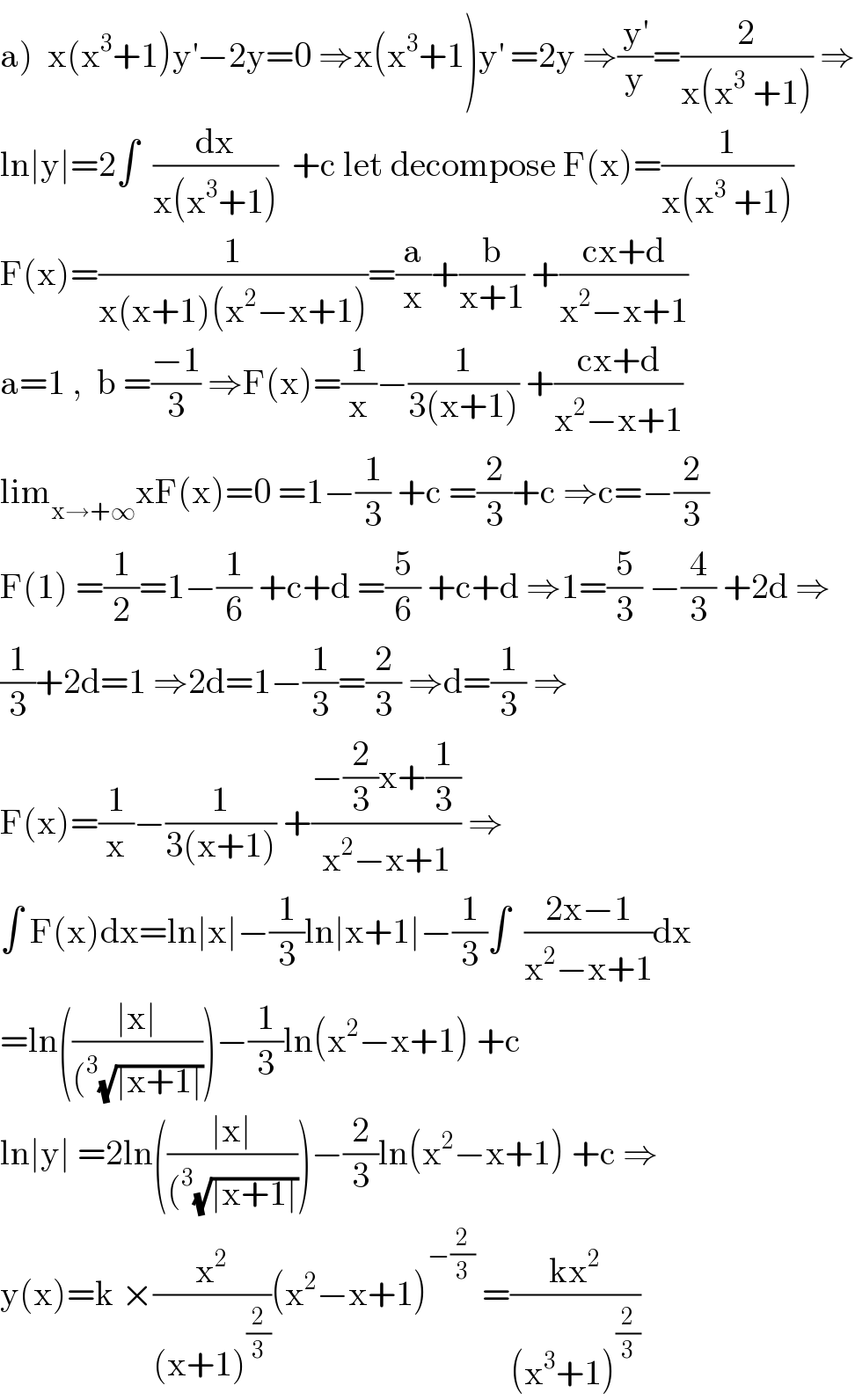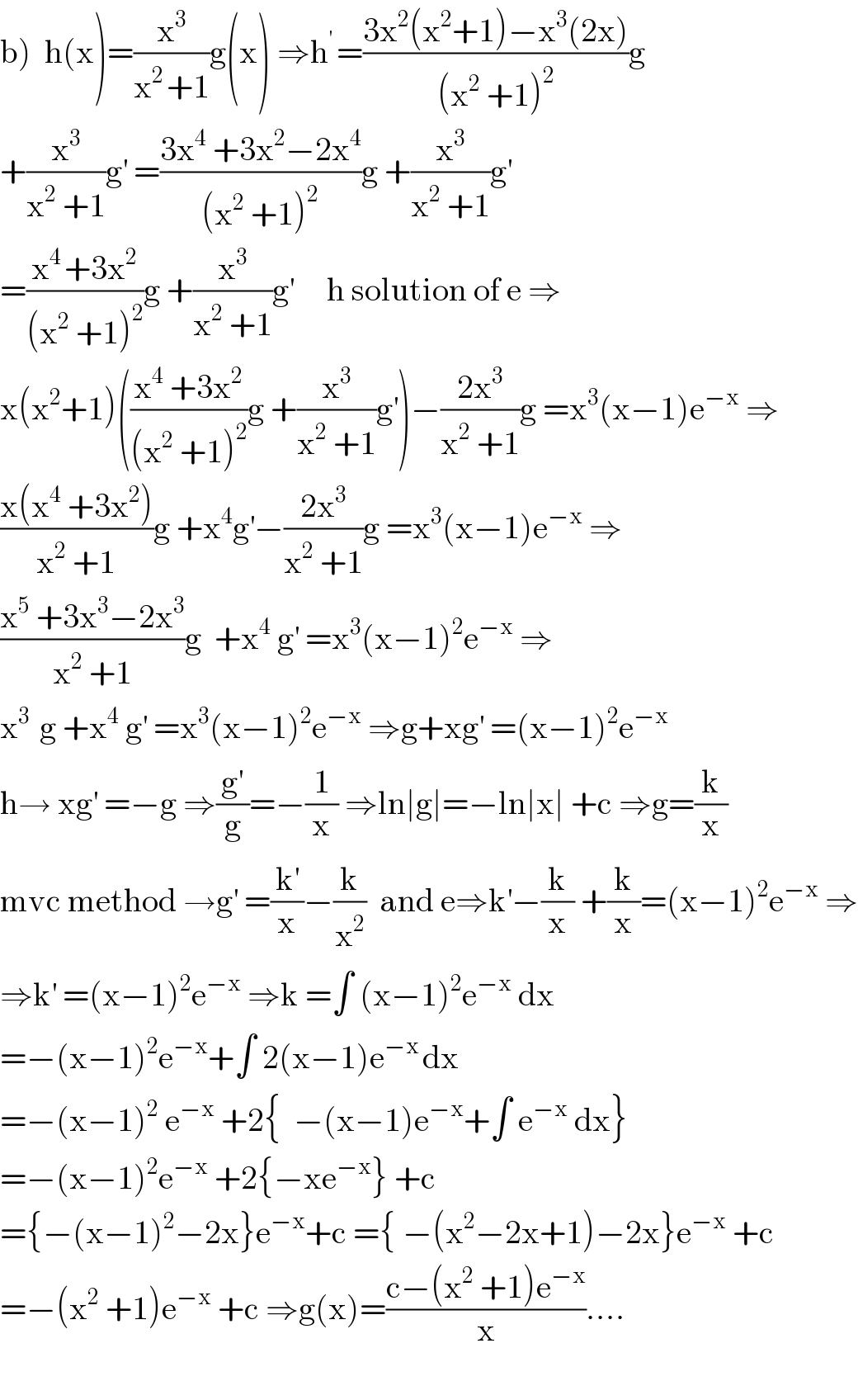
Question and Answers Forum
Previous in Differential Equation Next in Differential Equation
Question Number 123982 by Ar Brandon last updated on 29/Nov/20
![Consider the D.E (E): x(x^2 +1)y′−2y=x^3 (x−1)^2 e^(−x) a\ Resolve the DE x(x^3 +1)y′−2y=0 b\We wish to find a function g(x) such that the function h(x) defined by h(x)=(x^3 /(x^2 +1))g(x) is a particular solution of the equation (E) i\ Show that for it to be as such, we need to have g′(x)=(x−1)^2 e^(−x) ii\ Determine the real numbers α, β, and γ such that the function x→αx^2 +βx+γ is a primitive in the interval ]0,+∞[ of the function x→(x−1)^2 e^(−x) iii\ Deduce a particular solution of the equation (E) then the general solution of the equation (E)](Q123982.png)
Answered by mathmax by abdo last updated on 29/Nov/20

Answered by mathmax by abdo last updated on 29/Nov/20

